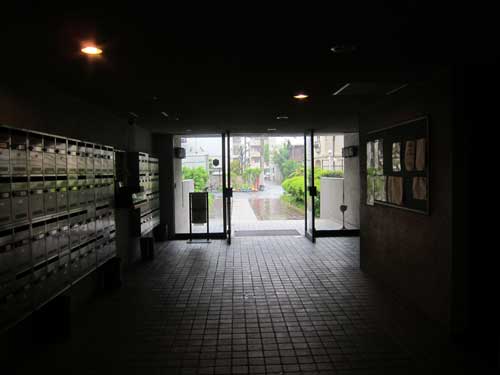
アパートの入り口から見えた、雨降りの朝の景色です。節電ですから、電気をほとんど消しています。中と外の対象がはっきりしていますね。
This is the view from my apartment building lobby on a rainy spring day. Because of energy conservation, many lights are turned off. This increases the contrast between indoors and outdoors.
I walk through this lobby every day, and rarely think about it or consider taking a photo. Recently, I participated in the Xerox and City photo workshop at Vacant, led by Hirano Taro and organzized by Too Much magazine as part of their Romantic Geographies series. We were asked to take photos of our breakfast and then our trip to the workshop in Harajuku. It made me think more about spaces that become automatic or ignored.
Tokyo residents are more aware of energy use and lighting now. Many parts of the city are less brighly lit: from billboards to train stations to residences. By lowering our lighting, we are more attuned to natural cycles, and more sensitive to the boundaries between private and public, indoor and outdoor, personal and shared resources.


